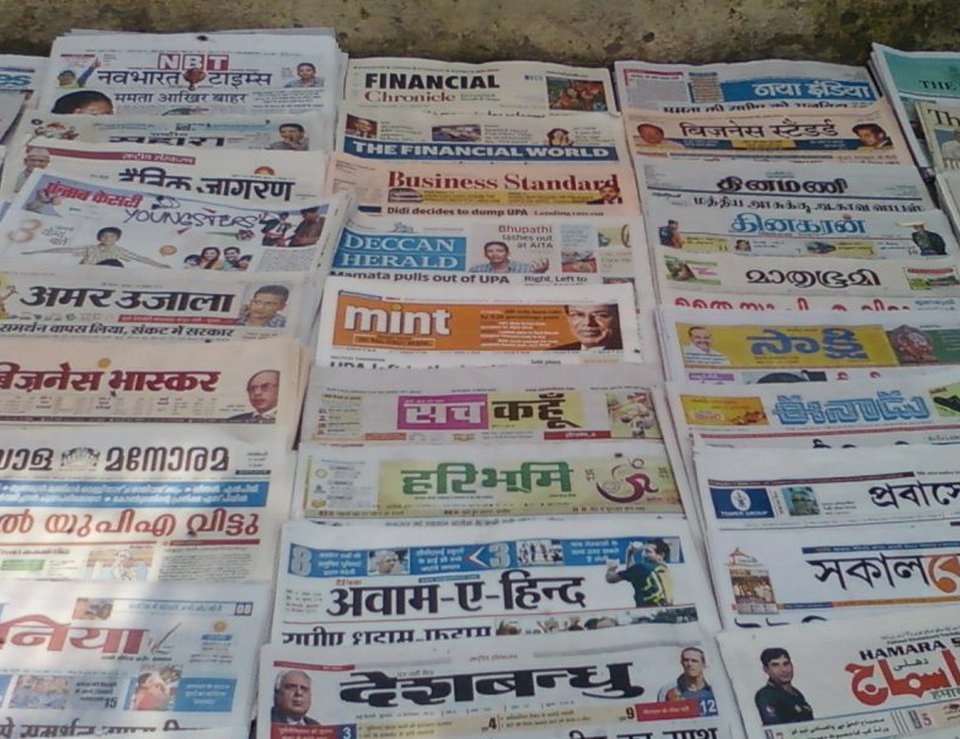
Indian media controlled by a few, a risk to press freedom and pluralism: Study
Study by Reporters Without Borders says though the Indian media market is huge, it is owned and controlled by a handful, thus establishing a pattern of monopoly.
by Amrita Nayak Dutta
New Delhi: Just four Hindi media outlets — Dainik Jagran, Hindustan, Amar Ujala and Dainik Bhaskar — capture 76.45 per cent of the readership in Hindi while the regional media market is equally concentrated, indicating “control of content and public opinion”, a new research project, Media Ownership Monitor (MOM), has revealed.
The project, Media Ownership Monitor: Who owns the media in India?, was carried out in India by international non-profit, non-governmental organisation Reporters Without Borders (RSF) and Delhi-based digital media company DataLEADS over a period of six months and was released Wednesday.
It revealed details of all Indian media owners across platforms and other information, including their shareholding patterns.
The project has concluded that while the Indian media market is huge, it is owned and controlled by a handful, thus establishing a pattern of monopoly. The concentration, it says, is a result of considerable gaps in the regulatory framework to safeguard media pluralism and prevent media concentration.
Media in the states no better
The data reveals that of five Tamil newspapers, the top two, Daily Thanthi and Dinakaran, combine for a readership share of 66.67 per cent. The newspapers, Eanadu and Sakshi, reach 71.13 per cent of the audiences in the Telugu language market. It states that this trend has been observed and validated across all regional markets including Bengali, Oriya, Punjabi, Kannada, Gujarati, Urdu, Marathi and Assamese.
“While Hindi language news is consumed in the main Hindi heartland, in the North and Central India, regional languages take precedence as one goes to the western, northern, eastern and southern parts of the country,” the report stated.
The project, through a detailed analysis of data, establishes that most of the leading media companies are owned by large conglomerates that are still controlled by the founding families, which also invest in a vast array of industries other than media.
The project establishes the fact it’s still important to note that ownership structures of almost all major media houses have “highly complicated cross-shareholdings” designed to either hide beneficial owners or to circumvent certain laws — or both.
The report says a majority of the media companies have business and political affiliations and that the links are more prominent in regional media, which it says, is a high risk to media freedom and pluralism in India.
“One means of political leverage can be exerted by rewarding or punishing media outlets through the allocation or non-allocation of advertising by the government,” it adds.
AIR has monopoly on radio
The report reiterated that in the radio sector, India’s state-controlled broadcaster All India Radio (AIR) has a nationwide monopoly on radio news given that private FM stations are not allowed to carry their own news content.
The project, however, could not analyse audience data for India’s television market because it says, the Broadcast Audience Research Council (BARC), an industry founded body, did not provide the researchers with data.
Story first appeared in ThePrint on 31st May 2019
STORY BY

Mumbai Press Club
Editor
Article posted on 19/07/2019
- Share This Story On:




